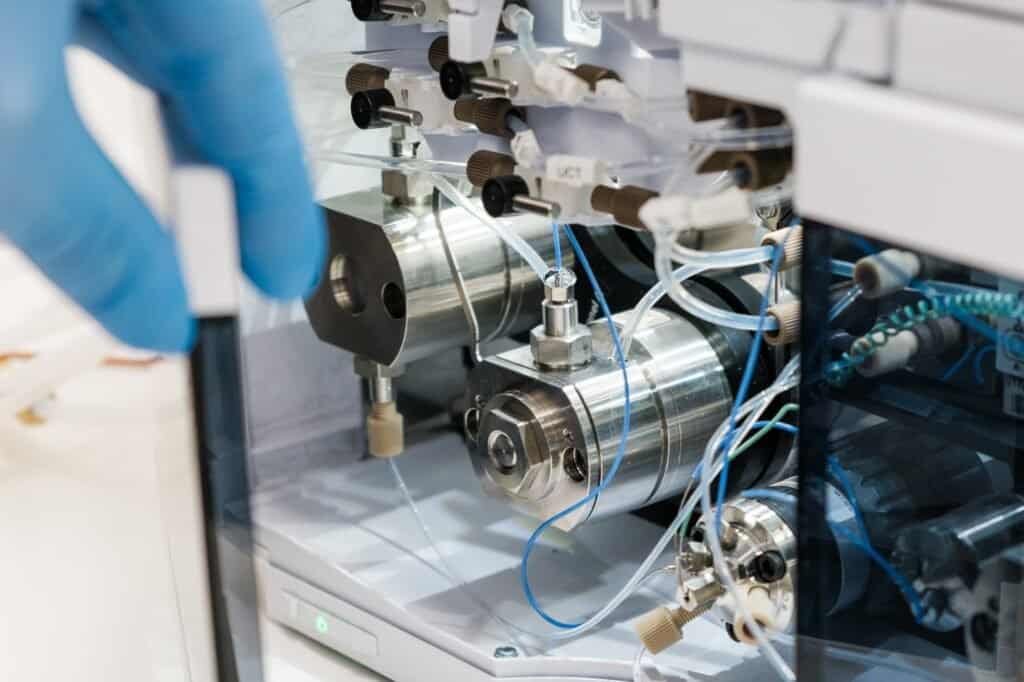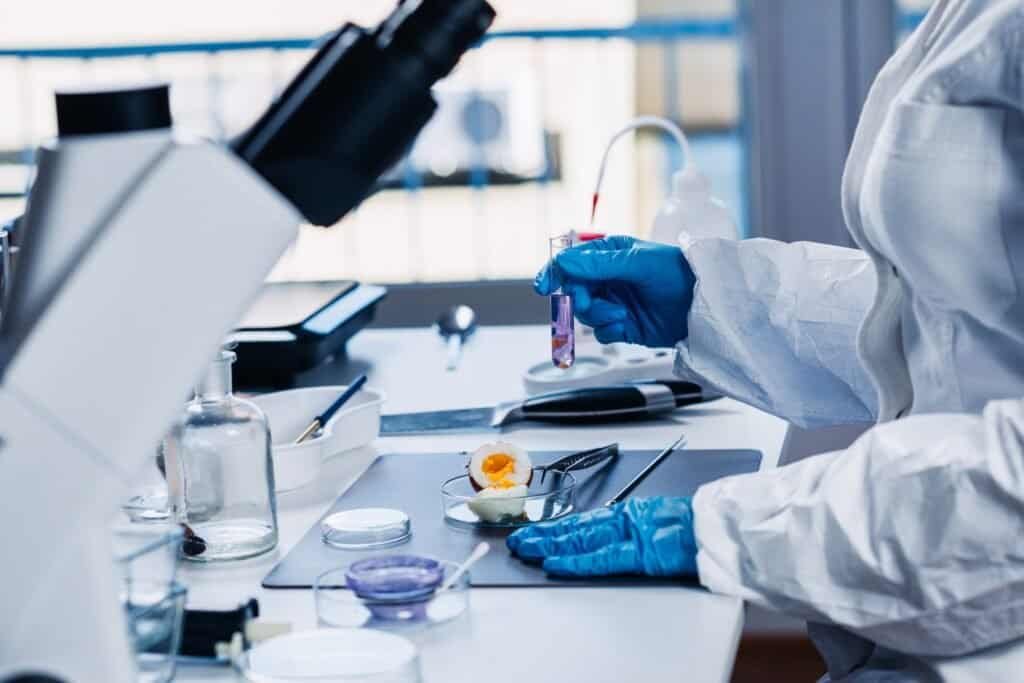High-Performance Liquid Chromatography (HPLC) has come a long way since its inception. From early liquid chromatography methods in the 1900s to today’s advanced high-throughput systems, HPLC has revolutionized chemical analysis, making it a fundamental technique in pharmaceuticals, food safety, environmental monitoring, and biomedical research.
The need for faster, more sensitive, and reliable separation methods led to the birth of modern HPLC in the 1960s, when scientists like Csaba Horváth and S. R. Lipsky introduced high-pressure pumps and small-particle columns. Over the decades, HPLC has undergone significant improvements, evolving from traditional column chromatography into today’s ultra-fast, automated, and highly efficient systems.
But what’s next? As industries demand higher sensitivity, sustainability, and automation, digitalization, AI, and predictive analytics are shaping the future of HPLC. In this article, we’ll explore key milestones, modern trends, and future innovations that are transforming chromatography as we know it.
1. Key Milestones in HPLC Technology
The evolution of HPLC has been marked by groundbreaking innovations that have improved speed, resolution, and efficiency. Let’s take a look at some major milestones:
1900s – Early Liquid Chromatography
- Russian scientist Mikhail Tsvet first introduced liquid chromatography in 1903 for separating plant pigments.
- The technique remained slow and inefficient due to low-pressure columns and large particle sizes.
1960s – Birth of Modern HPLC
- Csaba Horváth and S. R. Lipsky developed the first high-pressure liquid chromatography system at Yale University in 1967.
- Introduction of high-pressure pumps and small-particle columns significantly improved separation speed and resolution.
1980s – Revolution in Stationary Phases
- Reversed-phase HPLC (RP-HPLC) became the dominant technique, enabling the analysis of a wide range of pharmaceuticals and biomolecules.
- Development of C18 silica columns increased efficiency and selectivity.
1990s – Computerized HPLC and Detection Advances
- The introduction of automated data analysis software streamlined method development.
- Diode-Array Detectors (DAD) and Mass Spectrometry (MS) enabled greater analytical precision.
2000s – The Rise of Ultra-Performance Liquid Chromatography (UPLC)
- Waters Corporation introduced UPLC, which used sub-2 µm particle sizes, improving resolution and reducing run times by up to 90%.
2010s – Sustainability and High-Throughput Screening
- Focus on Green HPLC, with reduced solvent use and energy-efficient systems.
- Expansion of 2D-LC (Multidimensional Chromatography) for complex sample analysis.
With these milestones, HPLC has become faster, more precise, and more automated. But where is it heading next?

2. Modern Trends: UPLC, Multidimensional Chromatography, and Beyond
HPLC is continuously evolving to meet industry demands. Some of today’s most exciting trends include:
2.1 Ultra-Performance Liquid Chromatography (UPLC)
- UPLC operates at higher pressures (~15,000 psi), improving speed and resolution.
- Uses sub-2 µm particles, leading to faster run times, higher sensitivity, and reduced solvent consumption.
2.2 Multidimensional Chromatography (2D-LC)
- 2D-LC integrates two separation methods, allowing for greater resolution of complex samples.
- Widely used in pharmaceutical impurity profiling, proteomics, and food analysis.
2.3 Supercritical Fluid Chromatography (SFC)
- Uses supercritical CO₂ instead of organic solvents, making it an eco-friendly alternative.
- Popular in chiral separations and lipid analysis.
2.4 Miniaturized and Portable HPLC Systems
- Emerging microfluidic HPLC systems allow for field-based applications.
- Used in forensic science, food safety, and environmental monitoring.
These innovations are enhancing efficiency, sustainability, and portability, making chromatography more versatile than ever.

3. The Role of Digital Transformation in HPLC
3.1 Chromatography Data Systems (CDS) and Cloud Integration
- Advanced CDS software automates data collection, processing, and compliance reporting.
- Cloud-based platforms enable remote monitoring and real-time collaboration.
3.2 Artificial Intelligence (AI) in Method Optimization
- AI algorithms analyze data to suggest optimal column selection, flow rates, and gradients.
- Machine learning models predict retention times and peak resolutions, reducing method development time.
3.3 Internet of Things (IoT) in HPLC Systems
- IoT-enabled HPLC instruments provide real-time performance monitoring and predictive maintenance.
- Sensors track temperature, pressure, and solvent usage, improving reproducibility.
The integration of AI, IoT, and cloud computing is making HPLC more intelligent, efficient, and automated. Could we be moving towards a future of fully autonomous chromatography?
4. Emerging Applications: From Food Safety to Proteomics
HPLC is playing a crucial role in cutting-edge research and industry applications:
4.1 Pharmaceutical Industry
- Impurity profiling and stability testing of new drugs.
- Bioanalytical HPLC for therapeutic drug monitoring in clinical research.
4.2 Food and Beverage Testing
- Detection of pesticides, mycotoxins, and food additives in regulatory compliance.
- Analysis of sugar profiles, caffeine, and preservatives in consumer products.
4.3 Proteomics and Metabolomics
- LC-MS/MS used for biomarker discovery and personalized medicine.
- HPLC in glycoprotein and peptide analysis for vaccine development.
4.4 Environmental Analysis
- Monitoring water contaminants, pharmaceutical residues, and heavy metals.
- Rapid screening of industrial pollutants and microplastics.
HPLC’s ability to evolve with industry needs ensures its continued relevance in scientific advancements.

5. The Future: Predictive Analytics and AI in HPLC
The next decade promises even more game-changing innovations in HPLC:
5.1 AI-Powered Predictive Analytics
- AI-driven software will predict column lifetime, retention times, and system performance.
- Self-optimizing HPLC methods will reduce manual adjustments and errors.
5.2 Fully Automated HPLC Systems
- Integration of robotic sample preparation and AI-driven data analysis.
- Real-time error detection and system troubleshooting via machine learning.
5.3 Personalized Medicine and Biomarker Discovery
- Advanced bioanalytical HPLC-MS techniques will enable real-time patient drug monitoring.
- Non-invasive biomarker detection for early disease diagnosis.
5.4 Green and Sustainable HPLC
- Further reduction of organic solvent use and development of biodegradable columns.
- Expansion of supercritical fluid chromatography (SFC) and water-based mobile phases.
Could we see fully autonomous HPLC labs powered by AI and robotics? The future of chromatography is heading towards faster, smarter, and greener technologies.
Conclusion: What the Future Holds for Chromatography Professionals
The evolution of HPLC from simple liquid chromatography to AI-driven, high-speed, multidimensional analysis reflects its growing importance in science and industry. With innovations in UPLC, 2D-LC, digitalization, and predictive analytics, chromatography is becoming smarter, faster, and more efficient.
For chromatography professionals, the future holds exciting opportunities to leverage new technologies for improved accuracy, sustainability, and automation. Whether you’re in pharmaceuticals, environmental science, or clinical research, keeping up with these trends will be key to staying ahead.
Are you ready to embrace the next generation of HPLC technology? The future is now—let’s innovate together!
FAQs
1. How has HPLC changed over the years?
HPLC has evolved from low-pressure liquid chromatography to high-speed UPLC, multidimensional chromatography, and AI-powered analytics.
2. What are the latest trends in HPLC?
Recent trends include UPLC, green HPLC, AI-driven method development, and fully automated systems.
3. How is AI transforming HPLC?
AI is optimizing method development, predictive maintenance, and real-time data analysis, reducing manual intervention.
4. What industries benefit most from modern HPLC?
Pharmaceuticals, food safety, environmental testing, and proteomics rely heavily on advanced HPLC techniques.
5. What does the future of HPLC look like?
Expect fully automated, sustainable, and AI-driven HPLC systems with greater precision, speed, and intelligence.











